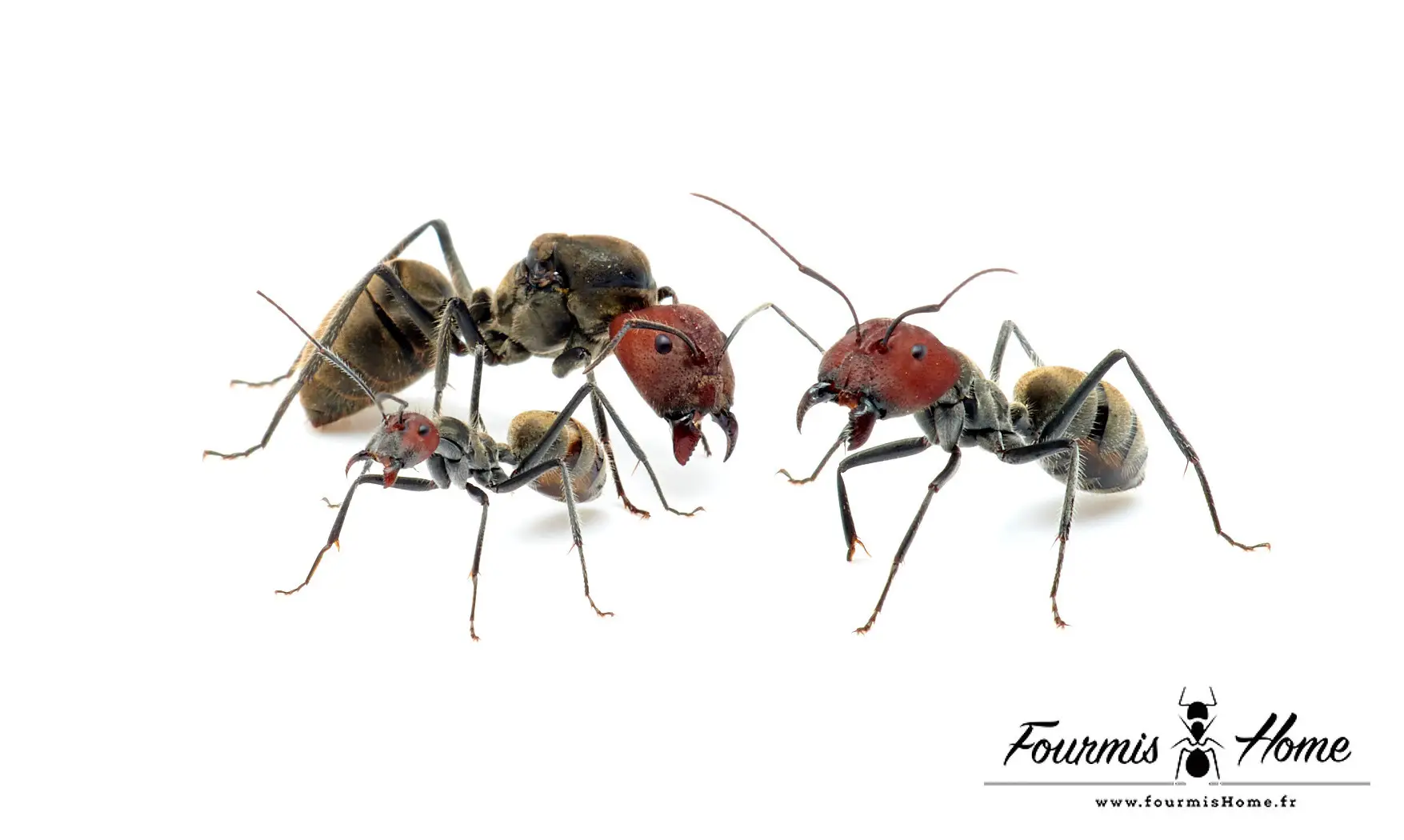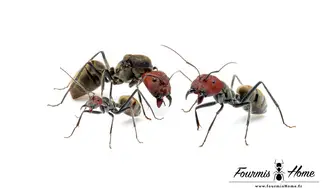

Camponotus singularis
Reference : CFOUR-086
103.92€
Available
0 in stock
Latin name: Camponotus singularis
Taxonomy: Subfamily: Formicinae, Tribe: Camponotini
Breeding level: Intermediate, breeding conditions must be carefully observed
Geographic distribution: Southeast Asia
Habitat: Tropical rainforest
Colony form: Monogyne
Queen: Size: 20 - 22mm Color: Black with red head
Workers: Size: 11 - 15mm Color: Black with red head
Major: Size 17 - 22mm Color: Black with red head
Male: Size: 15mm Color:
Food: Honeydew and insects: such as flies, mealworms, mosquitoes and small locusts; also fruits
Humidity: Hunting area: 30 - 50% Nest: 50 - 70%
Temperature: Hunting area: 21 - 35 ° C Nest: 24-28 ° C
Hibernation: No, but we recommend a winter break from November to March at room temperature
Nest type: Plexiglas nest, classic tube nest or plaster, reconstituted stone nest
Description: Camponotus singularis is a Camponotus of an impressive size and thickness which will delight fans of the genus Camponotus.
Development: Swarming at the start of the rainy season
Foundation: takes place in a cloistered manner (without food) Development: 45 days from egg to worker (depending on temperature)
Size of the colony: Small colony of 1000 individuals, the queen can reach the age of 15 years
Taxonomy: Subfamily: Formicinae, Tribe: Camponotini
Breeding level: Intermediate, breeding conditions must be carefully observed
Geographic distribution: Southeast Asia
Habitat: Tropical rainforest
Colony form: Monogyne
Queen: Size: 20 - 22mm Color: Black with red head
Workers: Size: 11 - 15mm Color: Black with red head
Major: Size 17 - 22mm Color: Black with red head
Male: Size: 15mm Color:
Food: Honeydew and insects: such as flies, mealworms, mosquitoes and small locusts; also fruits
Humidity: Hunting area: 30 - 50% Nest: 50 - 70%
Temperature: Hunting area: 21 - 35 ° C Nest: 24-28 ° C
Hibernation: No, but we recommend a winter break from November to March at room temperature
Nest type: Plexiglas nest, classic tube nest or plaster, reconstituted stone nest
Description: Camponotus singularis is a Camponotus of an impressive size and thickness which will delight fans of the genus Camponotus.
Development: Swarming at the start of the rainy season
Foundation: takes place in a cloistered manner (without food) Development: 45 days from egg to worker (depending on temperature)
Size of the colony: Small colony of 1000 individuals, the queen can reach the age of 15 years

